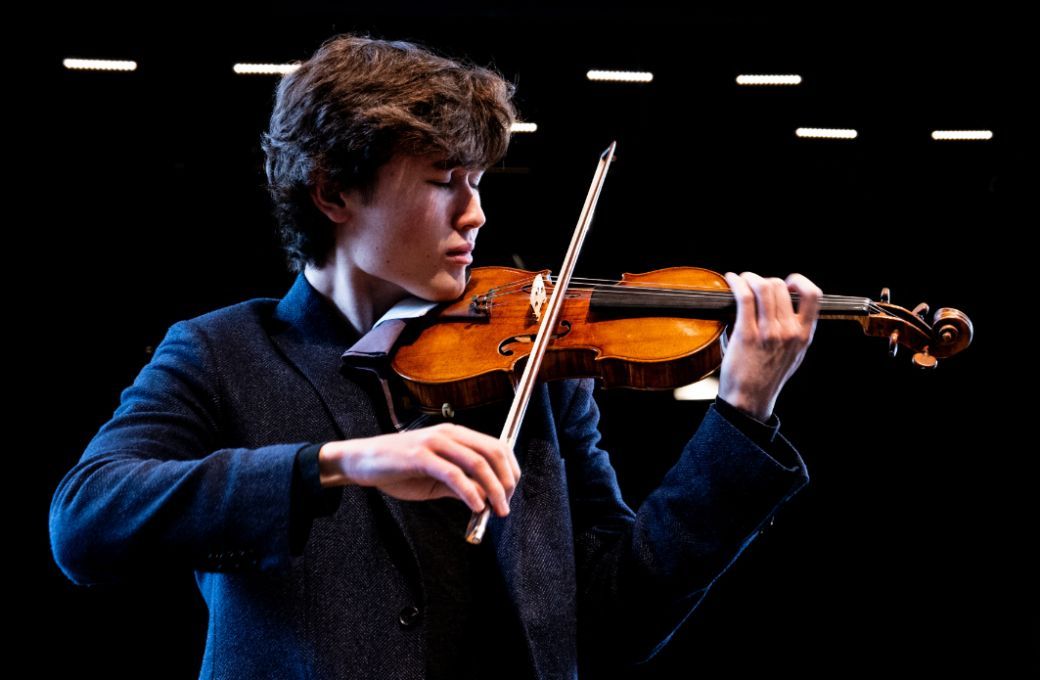Prokofiev’s Second Violin Concerto begins with the soloist alone. Daniel Lozakovich made an immediate impression with his first pair of six-note phrases, enough to hint at what was to come in terms of warmth of tone (his very first note G is the lowest on the instrument) and his very quiet playing. The Philharmonia players seemed chamber partners at times (the concerto is modestly scored). The Russian folk mood soon gave way to luminous lyrical music – Prokofiev’s great ballet Romeo and Juliet comes from the same year, 1935. Here, Lozakovich was if anything quieter still, aided by the conductor’s dampening of the orchestra, so the violinist’s thread of tone resembled a whispered endearment. The livelier solo runs were articulated with precision, if not virtuoso fire – but then it’s not that kind of bravura concerto.

The ingratiating slow movement was well served by these artists. The beautiful opening violin melody has but a bare string pizzicato plus clarinets for company. A curious feature of this concerto, the frequent use of the bass drum, is unexpected in a lyrical slow movement. At times here and in the finale many phrases were heard over its dull quiet thud. The soloist launched the finale’s rondo theme with an emphatic stomp, and the movement gave him the chance to show more of the traditional concerto soloist dominance, but even now double-stopped chords were not rough, more the quiet rasp of torn silk. Then, of all things, the clack of castanets was heard, a touch often assumed to be for the audience at the Madrid premiere. Nothing disturbed the impression of an engaged and engaging performance of this marvellous work.
Rachmaninov’s Symphony no. 2 in E minor was once derided, ignored and rarely played without disfiguring cuts. Much revised by the composer, it is now understood there is no need for more changes. This is the supreme example of the Rachmaninov style working on a large scale, but still a challenge for conductors. How to bring off the most romantic work of the last great Romantic composer, all 60 minutes of it?
One answer is to send for Tugan Sokhiev who, on tonight’s evidence, is a master of this work. The opening Largo is so expansive it builds to a climax worthy of a many a slow movement, and Sokhiev lingered luxuriously. The ensuing Allegro moderato was swift enough to complete this longest of the movements in 23 minutes, minus its marked exposition repeat on this occasion. The strings galloped into the Scherzo, the horns duly blazoned the fanfare-like theme, and Sokhiev frankly swooned into the next lyrical indulgence. The middle section fugue showed off the strings’ athleticism. The strings also dominate the slow movement climaxes, but that movement always belongs to the Principal Clarinet, here the excellent Mark van de Wiel whose solo call got the biggest cheer (among many). The pinnacle of the movement was an object lesson by the conductor in how to build, over all those long repeated phrases, towards a mighty climax.
The finale had all these qualities, and the audience reception was very enthusiastic. Not the least intriguing aspect of the second half was the orchestral sound. The acoustic of the Royal Festival Hall has its critics, players and conductors included. But the Rachmaninov bloomed rather than boomed, with no hardening in climaxes. Perhaps Sokhiev’s constant balancing, often phrase by phrase using no baton but many insistent gestures, and right in the faces of his front desk string players, was key. It is rare that a conductor asks as often for less volume as for more. No all-purpose general mezzo-forte here.


